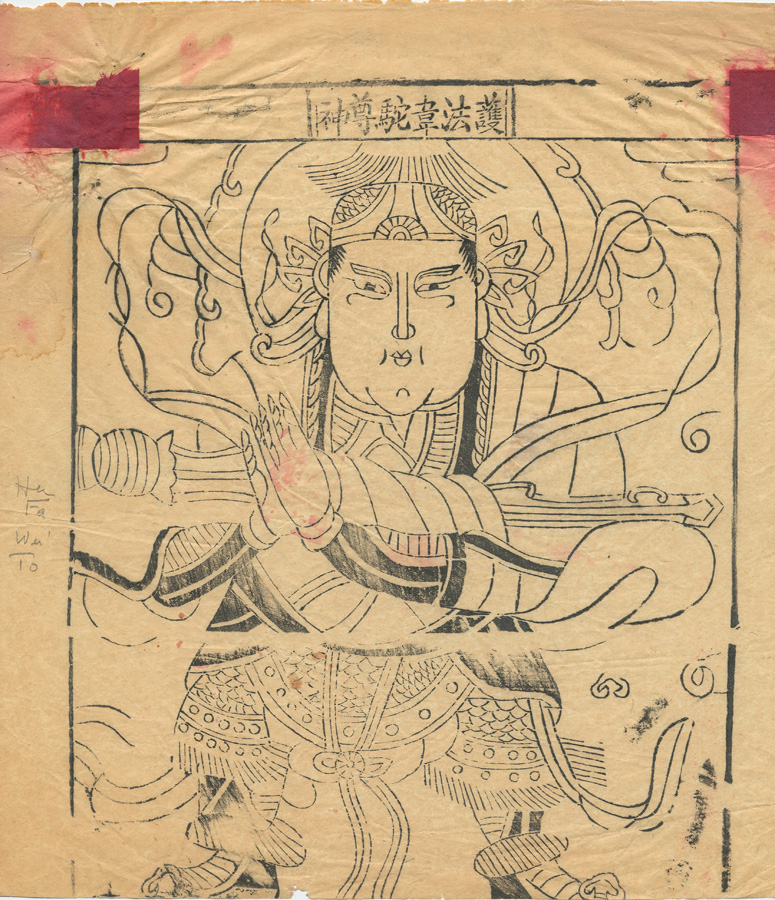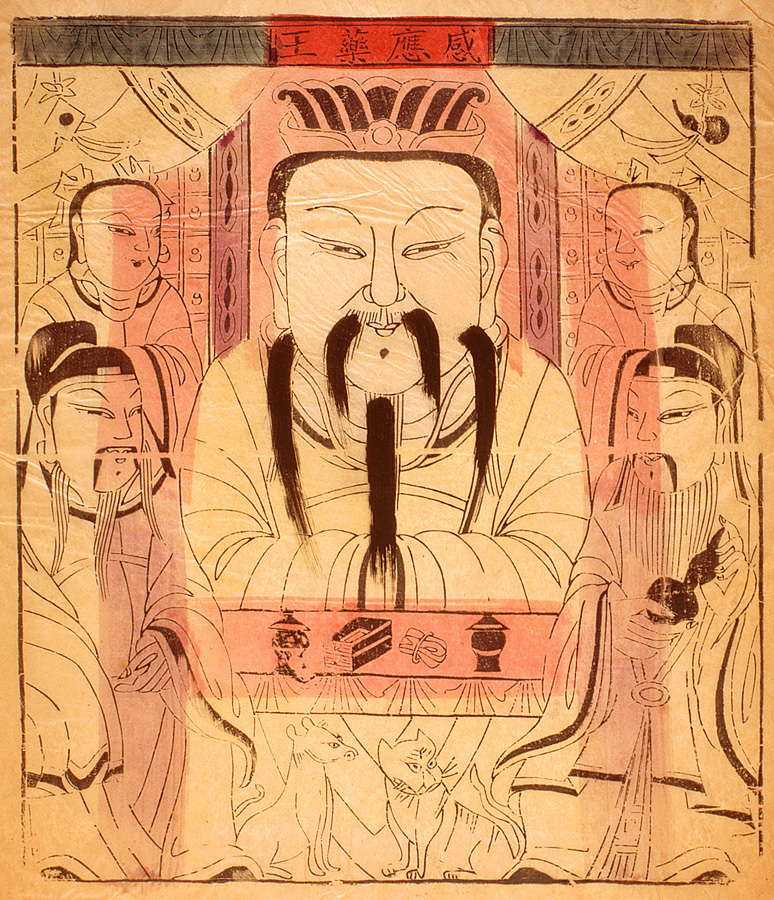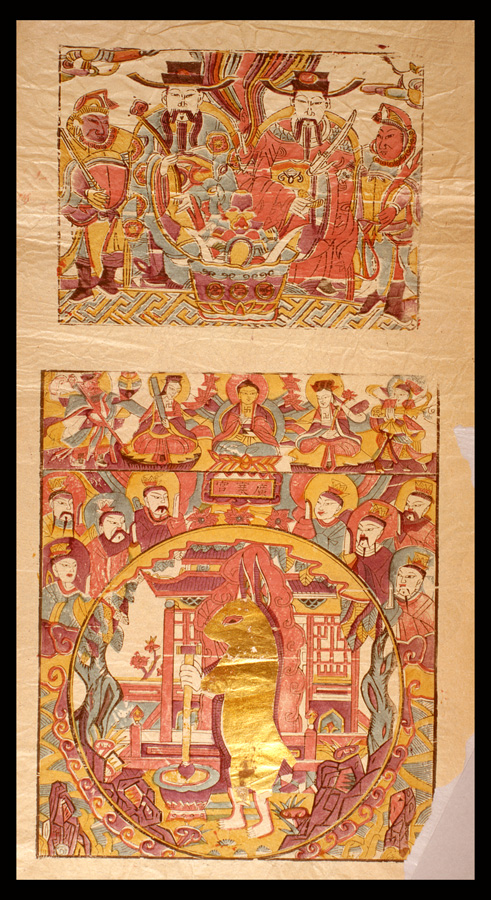
Zhong Kui

Da Zhonghua Minguo ba nian Zaojun zhi shen wei

Zhong shen

Guansheng Dadi

Hu fa Weituo zun shen

Menshen

Menshen

Caishen

Fu zai yan qian

Fu zi tian lai

Ganying Yaowang

Guang han gong
Ancient folk religions of China include elements of Daoism, Confucianism, Buddhism, ancestor veneration as well as mythological deities and astrology. Worship of the hundreds of Gods and Saints is regarded as complementary rather than conflicting with a person's chosen religion.
The ubiquitous public face of Chinese folk religions are the New Year's woodblock illustrations ('nianhua') which have been produced for more than a thousand years. These (generally) inexpensive prints are said to bestow luck on the household or ward off evil spirits and are either displayed prominently throughout the year and then burned and replaced, or are burned as part of ceremonial practices on auspicious dates.
The longer lasting prints (usually the more elaborate and colourful) are conspicuously displayed on the front, back and bedroom doors, in the household shrine and in the kitchen (the 'stove God'), often in association with a calendar.
Anne Swann Goodrich (1895-2005) became entranced by the paper folk art traditions when she worked as a missionary in (the then) Peking. In 1931 she bought the whole colletion of 'nianhua' available from a print shop and spent much of the rest of her life studying the history and meaning behind the paper art forms. Her collection was donated to Columbia University sixteen years ago and represents a snapshot in time of the printing styles and imagery that constituted the popular visual culture of 1931 Peking.
- Chinese Paper Gods at the CV Starr East Asian Library at Columbia University. [or direct link to 200+ thumbnail images] {via The Scout Report}
- The Nianhua Gallery from James Flath at the University of Western Ontario.
- Will China Lose Its Nianhua?
- New Year Pictures at the National Digital Library of China - something of a lucky dip struggle for non-Sinologists. But there is of course nothing that cannot be overcome by clicking.
No comments:
Post a Comment